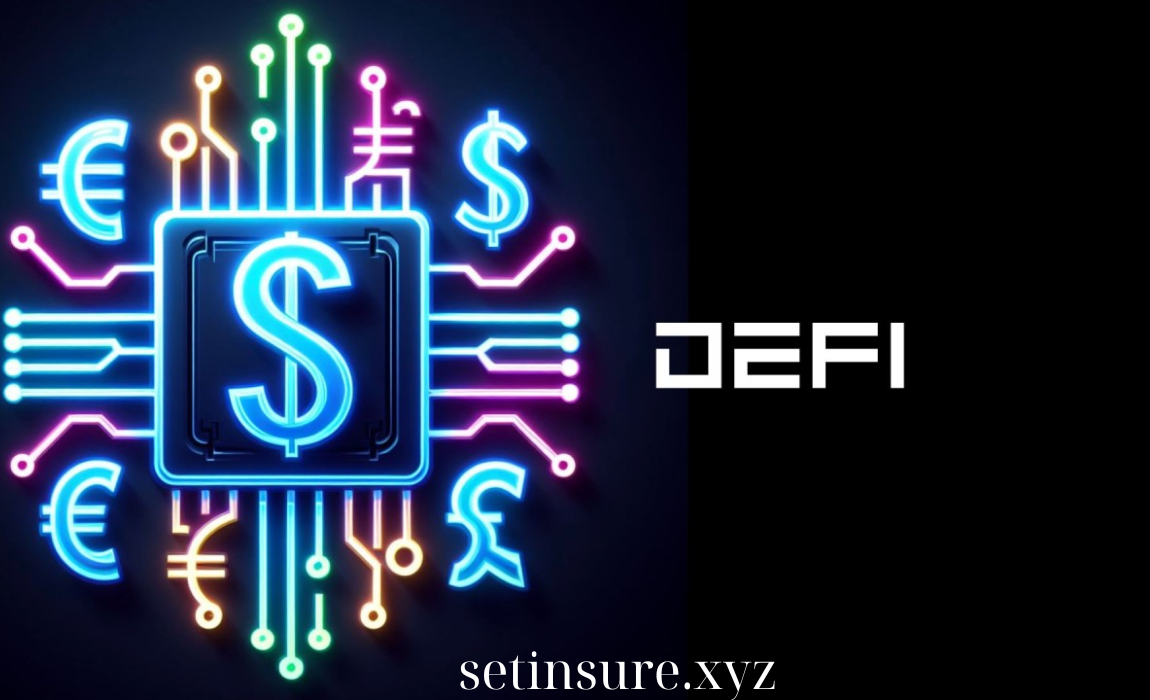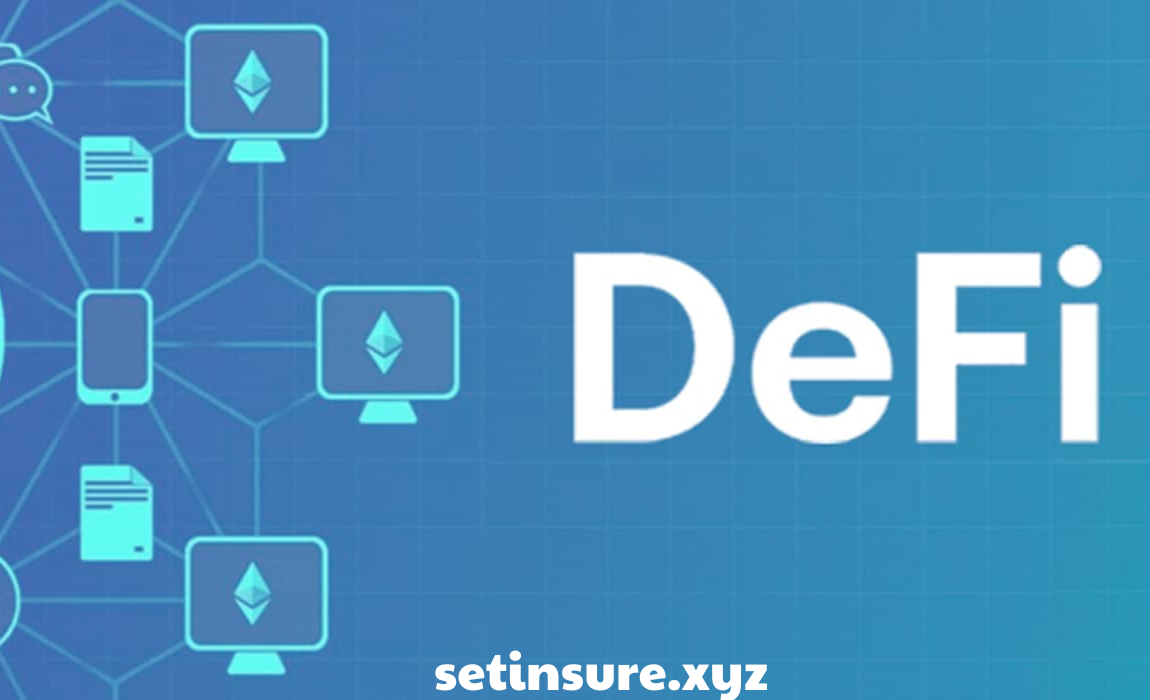Decentralized finance (DeFi) has transformed the financial landscape, offering a new way for individuals to borrow and lend assets without the need for traditional banks or intermediaries. DeFi borrowing allows users to access loans through blockchain-based platforms, offering greater flexibility, transparency, and control over their financial transactions. Whether you’re looking to leverage crypto assets or take advantage of lower interest rates, DeFi borrowing is unlocking a world of new opportunities.
In this guide, we’ll explore what DeFi borrowing is, how it works, and the benefits it offers over traditional borrowing methods.
1. What is DeFi Borrowing?
DeFi borrowing refers to the process of obtaining loans through decentralized finance platforms. Unlike traditional borrowing, where you need to go through a bank or financial institution, DeFi borrowing operates on blockchain technology, specifically through smart contracts. This eliminates the need for a central authority or third-party intermediaries.
DeFi platforms like Aave, Compound, and MakerDAO allow users to borrow against their cryptocurrency holdings by providing collateral. Borrowers can access funds instantly, while lenders can earn interest by providing liquidity to these platforms.
- Smart contracts: These are self-executing contracts with terms directly written into the code. They ensure that the loan agreement between borrowers and lenders is automated and secure.
- Collateralization: To borrow funds in DeFi, users must provide collateral, often in the form of cryptocurrency. The amount borrowed is typically a fraction of the collateral’s value to protect against market volatility.
Ideal for: Individuals seeking quick, decentralized loans without the need for credit checks or lengthy approval processes.
2. How DeFi Borrowing Works
The mechanics of DeFi borrowing are relatively straightforward. Here’s how it typically works:
- Step 1: Choose a DeFi platform: Users select a decentralized platform, such as Aave, Compound, or MakerDAO, to borrow from.
- Step 2: Provide collateral: To secure a loan, the borrower must deposit collateral, usually in the form of cryptocurrency like Ethereum (ETH) or stablecoins. The collateral is locked in a smart contract until the loan is repaid.
- Step 3: Borrow funds: Once collateral is deposited, the borrower can access funds. The amount borrowed is often less than the collateral provided (e.g., 50% or 75% of its value) to account for market fluctuations and protect the lender.
- Step 4: Repay the loan: The borrower can repay the loan at any time. Once repaid, the collateral is returned to the borrower, and any interest is paid to the lender.
Example: On Aave, a user may deposit 1 ETH as collateral and borrow DAI, a stablecoin. If the value of the collateral drops too much, the borrower may need to add more collateral to avoid liquidation.
Ideal for: Crypto holders who need liquidity but don’t want to sell their assets.
3. Benefits of DeFi Borrowing
DeFi borrowing offers numerous advantages over traditional financial systems, making it an attractive option for both individual and institutional users.
- No intermediaries: DeFi borrowing eliminates the need for banks or third-party lenders, allowing users to directly interact with the platform through smart contracts. This reduces costs and increases efficiency.
- Greater accessibility: Traditional loans often require credit checks, lengthy approval processes, and high fees. DeFi platforms provide instant access to funds without the need for credit scores, making borrowing more accessible.
- Transparency: All transactions and loan agreements are recorded on the blockchain, providing full transparency for both borrowers and lenders. Users can see real-time data on interest rates, collateral amounts, and loan terms.
- Global access: DeFi borrowing is not restricted by geographical boundaries. Anyone with internet access and cryptocurrency can participate, regardless of location.
Ideal for: Individuals and businesses seeking a more flexible, efficient, and inclusive borrowing experience.
4. Risks of DeFi Borrowing
While DeFi borrowing offers many benefits, it’s important to understand the risks involved.
- Volatility: Cryptocurrency markets are highly volatile, meaning the value of the collateral can fluctuate significantly. If the value of the collateral drops below a certain threshold, the loan may be liquidated, resulting in the loss of collateral.
- Smart contract risks: Since DeFi platforms rely on smart contracts, bugs or vulnerabilities in the code can lead to security issues or financial loss.
- Over-collateralization: Most DeFi platforms require borrowers to provide more collateral than the value of the loan. This over-collateralization is designed to protect against volatility but can be a barrier for users without sufficient assets.
Ideal for: Borrowers who are aware of market risks and are prepared to manage collateral fluctuations.
5. Popular DeFi Platforms for Borrowing
Several platforms are leading the charge in DeFi borrowing, each offering unique features and benefits. Here’s a look at some of the top DeFi platforms:
- Aave: Aave is one of the largest DeFi platforms, offering a wide range of assets for borrowing and lending. Aave’s unique feature is its “flash loans,” which allow users to borrow funds without collateral, provided the loan is repaid within the same transaction.
- Compound: Compound allows users to borrow and lend cryptocurrencies, with interest rates automatically adjusted based on supply and demand. It’s known for its user-friendly interface and wide selection of supported assets.
- MakerDAO: MakerDAO operates on the Ethereum blockchain and allows users to borrow DAI, a stablecoin pegged to the US dollar. Loans are collateralized with ETH or other crypto assets, and users can manage their loans through the Maker Vaults.
Ideal for: Crypto enthusiasts looking for a range of borrowing options and features.
6. The Future of DeFi Borrowing
As the DeFi ecosystem continues to grow, DeFi borrowing is expected to become more sophisticated and widely adopted. Future developments may include:
- More collateral options: Currently, most DeFi platforms require cryptocurrency as collateral. However, future platforms may accept a broader range of assets, including tokenized real-world assets such as real estate or stocks.
- Improved security: As DeFi platforms mature, enhanced security measures, including audits and bug bounties, will reduce the risks associated with smart contract vulnerabilities.
- Lower interest rates: As competition among DeFi platforms increases, borrowers may benefit from lower interest rates and more favorable loan terms.
Ideal for: Early adopters and crypto enthusiasts who want to take advantage of the growing DeFi space.
Conclusion: Unlocking Financial Freedom Through DeFi Borrowing
DeFi borrowing is reshaping the traditional financial system by offering a decentralized, transparent, and accessible way to borrow funds. With the ability to use cryptocurrency as collateral, borrowers can access liquidity quickly and efficiently, while maintaining control over their assets. As the DeFi ecosystem continues to evolve, the potential for further innovations in borrowing and lending is vast, making DeFi borrowing an exciting opportunity for individuals and businesses alike.
By understanding the benefits and risks, borrowers can make informed decisions and take full advantage of the flexibility and opportunities that DeFi borrowing provides.



